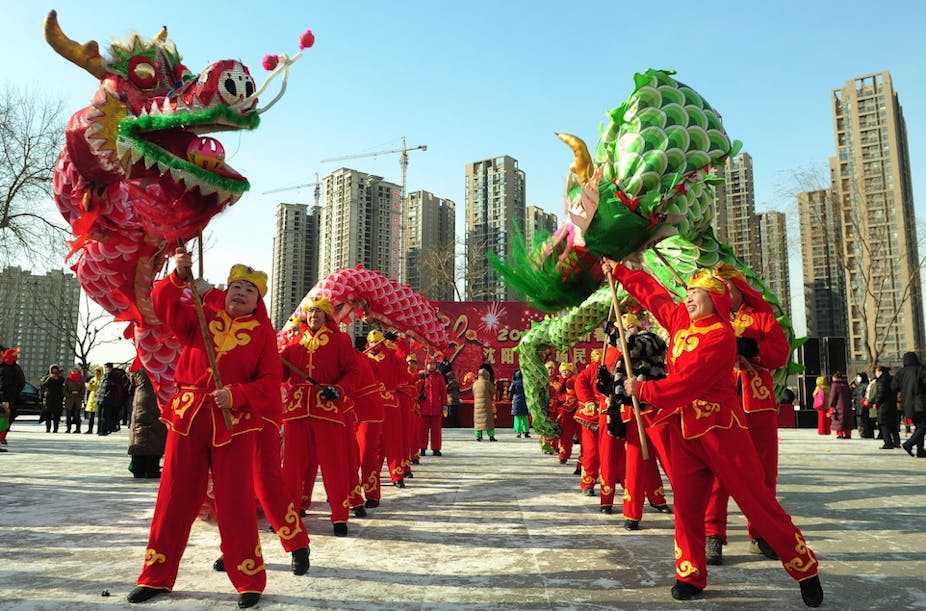These days, most economic commentators in Australia sing from the same hymn sheet when it comes to discussing our economic prospects: while the ongoing gloom in the US and the outright deterioration in conditions in Europe are obviously less than ideal, what really matters is what is happening in China.
Throughout most of 2011, the news on this front remained bright. At year-end, merchandise exports to China totalled $72 billion, up 23.5% on the previous year. Our terms of trade, widely seen to be driven by developments in China, also continued to crack record highs.
The start of 2012 however has seen anxiety levels amongst economic commentators rise markedly. The latest official figures show that in the fourth quarter of 2011, China’s GDP grew at a seasonally-adjusted, annualized rate of 8.2%. This was down from 9.5% in the previous quarter and has been taken by some as signalling the start of a much sharper fall in growth.
The reasons for the predicted downturn are several but mainly revolve around fears that China is in danger of becoming the latest victim of a housing price bubble at the same time that its exports are being hammered by weak demand from overseas.
How much should Australia worry about a growth slowdown in China in 2012? In my view, far less than recent media coverage would suggest.

Some perspective helps. China’s current rate of growth may be less than the 9.5% trend rate achieved over the past 30 years, but it continues to be higher than the target rate found in the country’s current five year plan of 7%.
As economists such as Barry Eichengreen have pointed out, a slowdown in China’s trend rate of growth, most likely beginning over the next few years, is entirely in keeping with international historical experience.
At least some of the current slowdown is also the intended consequence of macroeconomic policy. Until the fourth quarter of 2011, the main concern in China was inflation, not growth. Monetary policy was set accordingly: the reserve requirement for banks stands at 21%, a level that is staggeringly high by international standards.
If growth does fall by more than is considered desirable, the Chinese authorities retain the levers to shift policy in the opposite direction, such as reducing the reserve requirement for banks. Whether the largely state-owned banking system is capable of spurring demand in the short term by boosting liquidity while simultaneously funding investments that are productive in the long term is a different matter (and the answer is probably not).
With the upcoming once-in-a-decade leadership transition also taking place in October, the motivation to maintain “steady as she goes” growth in 2012 is strong.
The chance that China will experience a US-style economic meltdown led by the housing sector is reduced by the fact that households there rely much less on bank debt to purchase housing. Deposit requirements for borrowers are also much higher. In addition, the process of urbanisation still has a long way to run and this means that any surplus housing capacity in aggregate can be soaked up relatively quickly.

If anything, a continued, gradual fall in house prices this year would be welcomed by the Chinese authorities, given the growing social unrest that has accompanied deteriorating housing affordability.
Shifting the focus to Australia, the view that a slowdown in China must, in some mechanical way, have serious negative implications here is one that is stubbornly resistant to the data.
I have previously discussed on The Conversation how Australia’s economic dependence on China is poorly understood and often overstated.
As China’s growth slowed in the fourth quarter of 2011, Australian Bureau of Statistics data show that the value of our exports there still managed to increase. The same was true in 2009. Our terms of trade did fall, but only by a small margin, and this was mostly attributable to a rise in import prices, not a fall in export prices.
If conditions do deteriorate, policy-makers here are also not without levers at their disposal. The Reserve Bank of Australia (RBA) retains the scope to ease monetary policy. Other stabilisers would also come into play. For example, research by the RBA shows the important role that Australia’s flexible exchange rate plays in buffering the domestic economy from external shocks that impact on the terms of trade.
Some sectors of the economy, notably manufacturing, tourism and education - which are many times more important than mining from an employment perspective - would breathe a collective sigh of relief if the exchange rate were to weaken.
Returning to China, the real challenge for the authorities there is not the current growth slowdown, but rather effecting the longer-term structural adjustment needed for growth to be driven by domestic consumption.
Such growth implies a transfer of wealth to the household sector, whose purchasing power has lagged significantly behind China’s overall rate of output growth. This transfer can be achieved in several ways, such as higher wages or liberalised interest rates, but necessarily comes at a cost to powerful vested interests, notably state-owned enterprises.
Complicating matters further is that the hand of these vested interests has actually been strengthened in recent years as China’s system of “state-led capitalism” has gained both intellectual and popular favour.

